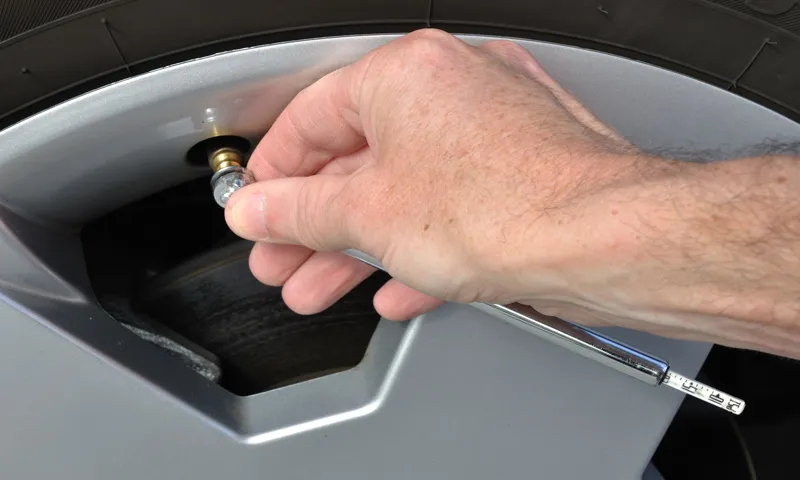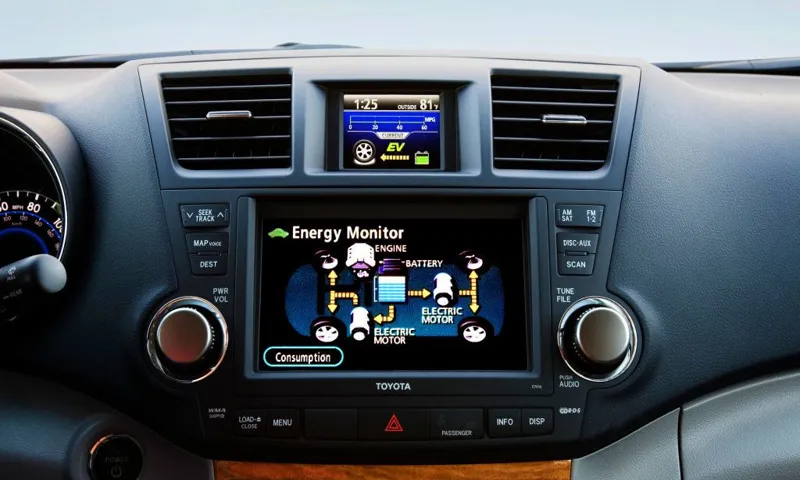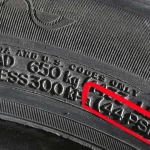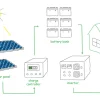Have you ever had your tire light come on during the colder months, even though you recently had your tires checked? You’re not alone. Many drivers experience this phenomenon and wonder why it happens. The answer isn’t always straightforward since there could be various reasons for your tire light to illuminate in cold weather.
It could be due to a decrease in tire pressure caused by the change in temperature, or it could be triggered by another issue. In this blog post, we’ll dive deeper into the reasons why your tire light may come on during cold weather and what you can do about it. So, buckle up and let’s explore this topic together!
Table of Contents
Introduction
Have you ever wondered why your tire light comes on when it’s cold outside? It’s a common occurrence that can leave you feeling confused and frustrated. One of the main reasons this happens is due to a decrease in tire pressure as the temperature drops. Cold air causes the air inside the tire to contract, and as a result, the pressure decreases.
This change in pressure can trigger the tire pressure monitoring system (TPMS), which prompts the tire light to illuminate on your dashboard. It’s important to keep an eye on your tire pressure during colder months to avoid any potential safety hazards or damage to your tires. You can easily check your tire pressure with a tire gauge or bring your vehicle to a professional for assistance.
Remember, maintaining proper tire pressure is crucial for the safety and longevity of your vehicle.
Definition of Tire Pressure Monitoring System
Tire Pressure Monitoring System (TPMS) Introduction: Have you ever driven on a flat tire without even knowing it until it was too late? Not only is it stressful but it can also be dangerous. Fortunately, modern cars are equipped with a tire pressure monitoring system (TPMS) designed to alert drivers when tire pressure is low. This innovative system uses sensors embedded in the tires to detect when air pressure drops below a safe threshold, typically around 25% of the recommended tire pressure.
Once triggered, the TPMS sends a warning signal to the car’s computer, which then alerts the driver through a visual or audible signal on the dashboard. So, let’s dive into the nitty-gritty of TPMS and understand it in detail.

Reasons that Trigger Tire Pressure Light in Cold Weather
Have you ever wondered why your car’s tire pressure light comes on when the temperature drops outside? Well, the answer is quite simple. Temperature changes can cause the air inside your tires to contract, resulting in lower tire pressure. This can lead to the tire pressure light turning on to alert you of the low pressure.
However, there could be other reasons why the tire pressure light is triggered in cold weather. For instance, if your vehicle has a faulty tire pressure sensor, it could be causing the light to illuminate even when the tire pressure is normal. Additionally, if your tires are old or worn out, they may be susceptible to air leaks, which could lead to low tire pressure.
It’s important to regularly check your tire pressure, especially during cold weather, to ensure that your vehicle is safe to drive.
Temperature changes and tire pressure
Temperature changes and tire pressure are closely related, which is why tire pressure monitoring systems (TPMS) often trigger the warning light during cold weather. In low temperatures, air pressure inside the tire decreases, causing the pressure to drop below the recommended levels. This is because when temperature drops, molecules in the air contract and occupy less space, leading to decreased tire pressure.
The TPMS detects this drop in pressure and alerts the driver to avoid any potential hazards on the road. It’s crucial to maintain the right tire pressure for safe driving, especially in cold weather. Keeping the recommended tire pressure can prevent accidents, improve fuel economy and increase tire longevity.
So, always check your tire pressure regularly and ensure they are inflated to the recommended levels to avoid triggering the warning light!
TPMS Sensor Malfunctioning
During cold weather, drivers often find their tire pressure light suddenly flashing on the dashboard. The most common reason for this is a malfunctioning TPMS (Tire Pressure Monitoring System) sensor. The sensor in each tire sends data to the car’s computer regarding the pressure in the tire.
When the sensor detects lower pressure than usual, it triggers the tire pressure light to come on. In cold weather, the air inside the tire contracts and the pressure decreases. This could lead to the TPMS sensor malfunctioning and sending a false alarm.
Another reason for the tire pressure light to come on in cold weather is low tire pressure caused by a punctured or leaking tire. It is essential to keep the tires properly inflated to avoid possible damage to the TPMS sensors. Drivers should always check the tire pressure and inflate the tires to the recommended levels to avoid any malfunctions.
Low Tire Pressure in Cold Weather
Low tire pressure is a common issue that drivers face in cold weather. When the temperatures drop, your tire pressure can drop as well, triggering the tire pressure light on your dashboard. There are a few reasons why this happens.
One reason is the contraction of the air inside the tires. Cold temperatures cause the air molecules to contract, leading to a decrease in pressure. Another reason is that cold weather causes the rubber in your tires to become stiffer, reducing the surface area of the tire in contact with the ground and, as such, increasing the pressure inside the tire.
It’s important to keep an eye on your tire pressure in the winter months and inflate your tires to the recommended pressure level. By doing so, you can avoid premature tire wear, improve your vehicle’s fuel efficiency, and ensure your safety on the road. So, before your tire pressure light comes on, take some time to check your tire pressure and make the necessary adjustments.
Effects of Ignoring the Tire Pressure Light in Cold Weather
If you’ve ever wondered “why does my tire light come on when it’s cold?”, the answer is simple: cold weather can cause your tire pressure to drop, triggering the sensor in your car. But what happens if you ignore the warning light and continue driving with underinflated tires? The effects can be dangerous. In cold weather, your tires lose pressure faster, which can lead to decreased fuel efficiency, poor handling, and even tire failure.
Plus, if you continue to drive on underinflated tires, you increase the risk of an accident. So, the next time your tire pressure light comes on in cold weather, don’t ignore it – take the time to check your tire pressure and inflate them to the recommended level. It may be a minor inconvenience, but it’s worth it for your safety and the longevity of your tires.
Reduced Fuel Economy
Ignoring the tire pressure light in cold weather can lead to reduced fuel economy, which in turn can affect your wallet in the long term. We often overlook the importance of maintaining the proper tire pressure, but it is crucial to keep an eye on it, especially during the winter months. When temperatures drop, the air in your tire contracts, causing a drop in tire pressure.
If the pressure drops below the manufacturer’s recommended specifications, it can lead to increased rolling resistance, resulting in a decrease in fuel efficiency. This means that you may have to spend more on gas, which can add up over time. So, the next time you see that tire pressure light come on, don’t ignore it, and be sure to check your tires’ pressure regularly to ensure optimal fuel efficiency and save money on gas.
Increased Risk of Tire Failure
When the temperature drops in the winter, it’s common for the tire pressure light to illuminate on your dashboard. While it may be tempting to ignore it, doing so can lead to increased risks of tire failure. When a tire is underinflated, it can cause more of the tire’s surface area to come into contact with the road, resulting in increased heat buildup.
This heat can lead to tread separation or blowouts, putting you and your passengers in danger. It’s important to address the issue promptly by checking your tire pressure and inflating them to the recommended level. Neglecting to do so not only puts you at risk of being stranded on the side of the road, but it also decreases your gas mileage and increases the wear and tear on your tires.
So next time your tire pressure light illuminates in cold weather, don’t ignore it – take action to prevent potential tire failure.
How to Prevent the Tire Pressure Light from Illuminating in Cold Weather
If you’ve ever experienced your tire pressure light illuminating when the weather gets cold, you’re not alone. Cold weather can have a significant impact on tire pressure, and when your tires are underinflated, it can trigger the tire pressure light to turn on. The air inside your tires contracts in cold temperatures, causing a drop in pressure.
To prevent this from happening, it’s essential to check your tire pressure regularly and fill your tires up to the recommended PSI. It’s also a good idea to invest in a tire pressure gauge, which will help you monitor the pressure levels and avoid overinflating your tires. Additionally, keeping your car in a garage or sheltered area can help prevent extreme temperature fluctuations, which can also impact your tire pressure.
By taking these steps, you can help prevent the tire pressure light from illuminating and ensure your safety on the road.
Proper Tire Maintenance
Proper Tire Maintenance Winter weather can be tough on your vehicle, and even more so on your tires. With the cold temperatures, it’s common for the tire pressure light to illuminate, indicating that your tires need attention. In order to prevent this from happening, there are a few key steps you can take to maintain your tires properly.
Firstly, be sure to check your tire pressure regularly, ideally at least once a month. This can be done at home using a simple tire pressure gauge, or at a local gas station. Secondly, ensure that your tires are properly inflated to the manufacturer’s recommended pressure, which can usually be found on the driver’s side doorjamb or in your owner’s manual.
Lastly, be sure to replace any tires that are worn or damaged, as they can cause safety concerns in addition to affecting your tire pressure. By taking these preventive measures, you can avoid the tire pressure light from illuminating and ensure that your tires are in top condition throughout the winter season.
Checking Tire Pressure Regularly
Keeping an eye on your tire pressure can save you a lot of headaches, especially during the colder months. Cold temperatures can cause your tires to lose pressure, leading to the dreaded tire pressure light coming on in your car. To prevent this, it’s crucial to monitor your tire pressure regularly by checking it at least once a month.
You can do this easily with a tire pressure gauge, available at any auto parts store or gas station. Simply remove the valve cap, press the gauge onto the valve stem, and read the pressure. If it’s too low, add air until it reaches the manufacturer’s recommended pressure.
By staying on top of your tire pressure, you can avoid the inconvenience and potential safety hazards of driving on underinflated tires.
Installing Winter Tires
Winter Tires, Tire Pressure Light, Cold Weather Installing winter tires can significantly improve your vehicle’s handling, traction, and safety on snowy and icy roads. However, it’s essential to keep an eye on your tire pressure to prevent the tire pressure light from illuminating in cold weather. As the temperature drops, the air inside your tires contracts, causing the pressure to decrease.
If your tires are already underinflated, the cold weather can worsen the situation and trigger the tire pressure light. Therefore, it’s crucial to check your tire pressure regularly and keep it within the recommended range. You can find the ideal pressure level in your car’s owner’s manual or on the sticker inside the driver’s door jamb.
Additionally, consider filling your tires with nitrogen instead of regular air, as nitrogen maintains its pressure better in varying temperatures. By taking these simple steps, you can avoid the hassle of dealing with an illuminated tire pressure light, ensure your winter tires perform optimally, and drive safely in cold weather.
Conclusion
Well, it turns out your tire light coming on when it’s cold is just your car’s way of telling you to bundle up! Just like we feel the chill in our bones during colder weather, your car’s tire pressure also decreases when temperatures drop. So, if you want to keep your car happy and avoid that pesky tire light, make sure you give your tires some extra love and attention during winter months – maybe even throw a little hat and scarf on them to keep them warm!
FAQs
Why does the tire pressure warning light come on in cold weather?
The tire pressure warning light can come on in cold weather because cold temperatures cause the air inside the tires to contract, leading to lower tire pressure.
Should I worry if my tire pressure warning light comes on when it’s cold outside?
Yes, you should take the tire pressure warning light seriously, even if it comes on in cold weather. Low tire pressure can be dangerous and negatively impact your car’s performance and fuel efficiency.
How can I check my tire pressure when it’s cold outside?
You can check your tire pressure when it’s cold by using a tire pressure gauge. Make sure to inflate your tires to the recommended pressure, which you can find in your owner’s manual or on a sticker inside the driver’s side door.
Can I reset my tire pressure warning light if it comes on in cold weather?
You can try resetting the tire pressure warning light by following the instructions in your owner’s manual or taking your car to a mechanic. However, if the warning light comes on again, it could indicate a more serious issue with your tires.
Is it safe to drive with a tire pressure warning light on in cold weather?
It’s not safe to drive with a tire pressure warning light on, regardless of the weather. Low tire pressure can lead to decreased grip and stability on the road, especially in wet or snowy conditions.
How often should I check my tire pressure in cold weather?
You should check your tire pressure at least once a month, regardless of the weather. However, it’s especially important to check your tire pressure in cold weather, as the air inside your tires can contract and cause pressure to drop more quickly.
What should I do if my tire pressure warning light comes on and my tires are properly inflated?
If your tire pressure warning light comes on and your tires are properly inflated, it could indicate a malfunction with your tire pressure monitoring system. Take your car to a mechanic for an inspection and repair if necessary.



